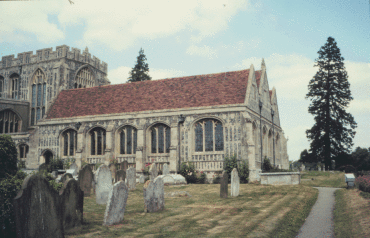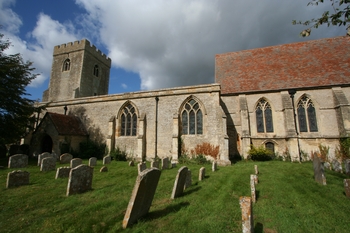
(Surnames Part 1 here)
Your surname means next to nothing genetically or geneologically. Furthermore, if you are of English or French descent, you are almost certainly some sort of relative of Charlemagne.
Taking our surname topic this week a bit further into the math of geneology, one quickly realizes that the surname or family name one ended up with is close to random. After all, how many c. 1500 AD ancestors do you have (around the time when surnames became fixed and inherited), each one an equal contributor to your genetics?
Well, just four generations ago, you had 32 living great-great-great grandparents (2 to the 4th power), all probably with different surnames. If you have a Mayflower ancestor, they were one of your mathematical 65,000 great-something grandparents 15 generations ago. The simple math, depending on the areas in which your 1500 AD ancestors lived, (your ancestry pool at a given time), indicates that I have up to a theoretical 4 million great-something grandparents who were living in 1500 (with ancestors doubling each generation of 25 years).
But, beyond the 4-10 generations back, those large numbers aren't possible, given the population pools in different local areas and the lack of mobility for most people at the time. (The population of London was around 50,000 in 1500. It is thought that the global population in 1500 was only around 300 million.)
Thus there must be abundant redundancy in our geneologies and tons of marriage and child production among cousins, in-laws, and other family members. This site, Redundancy in Geneology, takes a clear look at that subject.
 The technical term for this is "pedigree collapse," wherein our ancestral cone has a narrowing due to various forms of inbreeding, as it were. That collapse may have peaked around the year 1200, and in New England, there probably was another mini-pedigree collapse due to the small size of the population in the 16-1700s:
The technical term for this is "pedigree collapse," wherein our ancestral cone has a narrowing due to various forms of inbreeding, as it were. That collapse may have peaked around the year 1200, and in New England, there probably was another mini-pedigree collapse due to the small size of the population in the 16-1700s:
Colonial Anglo Population of New England through 1700
1650: 33,000
1678: 60,000
1706: 120,000
1734: 250,000
1762: 500,000
1790: 1,000,000
Population growth after 1640 was largely internal, not immigration.
It's still safe to say that I had thousands of c. 1500 ancestor great-something grandparents, and I happened to end up with just one of their recently-given surnames. Luck of the draw.
(If you are from England, you are still probably in some way related to almost everybody else in England. That's why we call our Brit fellow bloggers "cousin".)
Ultimately, of course, we all trace back to Mitochondrial Eve. She was certainly a cutie pie, and she must have had lots of kids.
Photos:
Upper: Holy Trinity Church, Long Medford, c. 1450.
Lower: Church of St. Peter in Great Haseley, Oxfordshire, c. 1200



 The technical term for this is "
The technical term for this is "